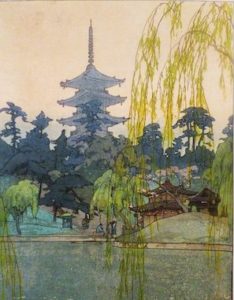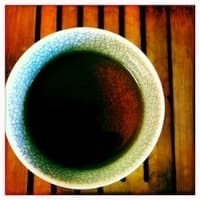There Are No Straight Lines in Nature
Nature expands in circles and cycles. Seeds aren’t square; they’re oval, round or starburst pentagons. Roots, branches and rivers wander and bifurcate, and everything living is always in motion. We imagine straight lines, but those exist only in our minds. There is no such thing in the wild.
 Healing is a reflective expression of nature. It’s round, cyclic, meanders and winds back on itself. It comes out of the same principles and processes that turn the spiral edges of galaxies, the growth of embryos, the shape of storms and the Golden Ratio dimensions of trees, parakeets, river deltas and tortoise shells.
Healing is a reflective expression of nature. It’s round, cyclic, meanders and winds back on itself. It comes out of the same principles and processes that turn the spiral edges of galaxies, the growth of embryos, the shape of storms and the Golden Ratio dimensions of trees, parakeets, river deltas and tortoise shells.
The straight-line story of health and healing, the take “A” to treat “B” simple arithmetic of medicated relief, when examined closely, does not work in the long term. It’s a modern misconception that life progresses in a straight line. Our vitality does not emerge and unfold in such a linear fashion. Reawakening the parts of us that have gone dormant from trauma, conditioning or beliefs that know how to heal us are more complex than slipping a particular molecule into a specific receptor site.
If only healing and the treatment of illness were that simple!
It’s not. Just ask anyone with a hormone imbalance or someone who has endured procedure after procedure, only to find they are constantly sailing a parallel course to their goals, or anyone who has experienced one step forward and then three steps sideways. Talk to people that have experienced a huge leap of relief — but then had to slog through a stutter-step of incremental change. They all know: Healing follows its own watercourse way.
In that space between what we expect and what actually unfolds is where our suffering sprouts and flourishes. We come around to an experience that triggers a familiar feeling, and then instantly snap to grid with the past. In doing so, we fail to recognize how this moment is not a circle, but a spiral. We come around to something similar, very similar, to an experience from the past, but gloss over how we are different. We fail to recognize the distance traveled, and instead of focusing on what’s different, we imagine everything still is the same.
That’s how we miss out on the neuroplastic opportunity to a build a few new neural pathways that create the bioelectrical/chemical basis for inhabiting a new experience.
Ours is a world of corners, straight lines and the curious sense that time is linear. In believing this to be the way our lives unfold, it’s easy to miss all the small divergences that call us to look with new eyes on territory frequently traveled.
In retrospect, it is possible to draw a line from where we started to where we are now. But in the process of unfolding in our healing, expect the unexpected and look forward to a deliciously circuitous experience.
DIY Acupuncture: San Jian Xue for Shoulder Pain
Today’s set of acupuncture points comes from Taiwanese Tung Shi acupuncture tradition. Doctor Tung’s acupuncture method is a family tradition that in some ways overlaps with conventional acupuncture and in many ways diverges wildly.
The points discussed here are helpful for shoulder pain, whether from frozen shoulder, rotator cuff tears, over-use in the gym or just too much slouching at your computer.

The points are located on the back of the thumb along the inside of the bone that goes between the wrist and first knuckle. There are three of them quite close together, which basically means that working with the entire area, in general, can help shoulder pain.
How do you know which part of that area is the most effective? Simply find the spot that is most tender. To apply pressure, use your fingernail, the rounded end of a wooden coffee stir stick or the rounded end of a Sharpie marker, perhaps the greatest acupressure tool ever invented. The Sharpie is the perfect size and shape, plus you can use it as a marker!
Which side to treat? Generally speaking, start with the side opposite to the side where you experience your shoulder pain. But do check the same side as well. The key is to find the point(s) that are the most tender.
Ideally, get someone to stimulate the point for you while you gently move your shoulder. You are not looking to stretch or force anything. Just explore the comfortable range of motion that you have while the points are stimulated, and notice how that range of motion naturally expands after a few minutes.

Does Acupuncture Treat That?
Macular Degeneration
I’m often asked if acupuncture treats a particular condition. Here in the West we tend to think of acupuncture as being effective for pain. This is partly because acupuncture is quite effective at pain management, and partly because so much Western research has focused on this one aspect of acupuncture.
 But in the East, people know that acupuncture is helpful for everything from anxiety to vertigo. What’s more, acupuncture doesn’t just “treat the illness” — it “treats the person.” This means acupuncture can directly work to treat the disease, but more importantly, it also can mobilize your own natural healing resources to help naturally resolve your health concern.
But in the East, people know that acupuncture is helpful for everything from anxiety to vertigo. What’s more, acupuncture doesn’t just “treat the illness” — it “treats the person.” This means acupuncture can directly work to treat the disease, but more importantly, it also can mobilize your own natural healing resources to help naturally resolve your health concern.
Recently I’ve been reading some research and doing my own study of a particular micro-system of acupuncture used to slow, and in many cases restore, vision loss from macular degeneration and retinitis pigmentosa. The system uses specific acupuncture points in the hands and feet.
This is very exciting work that demonstrates not just how helpful acupuncture is, but how amazing it is that with the right kind of focused input, our bodies have the ability to turn around chronic disease.
For more information on healing your eyes with Chinese medicine, I recommend these books and websites:
- Research that shows acupuncture to be of benefit to those with retinitis pigmentosa.
- Book in plain English on how to Healing Your Eyes with Chinese Medicine.
- Another book that focuses on Acupuncture Treatment for Macular Degeneration.
- Listen in on my Everyday Acupuncture Podcast interview with Mats Sexton, he is one of a small number of acupuncturists specializing in treating eye disease.
- For more information about Mats, check out his website.
- Andy Rosenfarb is another expert in treating eye disease and was involved in the research mentioned above. Visit his website.
Guide to Taming Seasonal Allergies
Walk by the “allergy” section in any drugstore, expose yourself to less than an hour of primetime TV or flip casually through any magazine and you are bound to encounter a rush of advertisements touting relief for the itchy, drippy, sneezy, foggy-headed clog caused by pollens, dust and other allergens.
 The litany of suffering and promises of relief are everywhere, but a curious silence prevails when it comes to dealing with the core issue from which these symptoms arise. Do you like the idea of building your body’s resiliency instead of taking daily medication that offers only symptomatic relief?
The litany of suffering and promises of relief are everywhere, but a curious silence prevails when it comes to dealing with the core issue from which these symptoms arise. Do you like the idea of building your body’s resiliency instead of taking daily medication that offers only symptomatic relief?
Download and read the Yong Kang Clinic’s Guide to Taming Your Allergies with Chinese Medicine!
The guide is full of DIY wisdom based on centuries of clinical experience. Or call us to make an appointment and get a jump-start on beating allergies this year.
Saying “No” to Sugar is Bad for (Big) Business
I read an article the other day that Big Food is on a mad search for more sugar substitutes. Apparently people are waking up to the long-term health issues associated with sugar and voting with their dollars. This is beginning to affect the companies’ bottom line now and certainly will continue to do so in the future.
 Want to be part of the rising tide that demands foods that do not contain added sugars? It’s actually quite simple. Stop eating sugar!
Want to be part of the rising tide that demands foods that do not contain added sugars? It’s actually quite simple. Stop eating sugar!
Nothing sends a message to big business like not spending your money on things you don’t want.
Have you given up on changing the habits and lifestyle that feed your sugar monster?
Habit change, unlike advertising would lead you to believe, cannot be accomplished in a few days or even weeks. Change requires rewiring your brain — and fortunately the brain is quite adept at just that with a little help from you.
With daily emails and guidelines for simple practices, Yong Kang Clinic’s “The Journey Beyond Sugar” helps you to gently rewire your grey matter.
Readers of the Yong Kang Clinic newsletter can detonate their sweet tooth for $49 by using the discount code REWIRE. And for those of you that want some extra help and support, personal coaching from me is an option.
Gratitude
is the understanding that many millions of things come together and live together and mesh together and breathe together in order for us to take even one more breath of air, that the underlying gift of life and incarnation as a living, participating human being is a privilege; that we are miraculously, part of something, rather than nothing.
Even if that something is temporarily pain or despair, we inhabit a living world, with real faces, real voices, laughter, the color blue, the green of the fields, the freshness of cold wind, or the tawny hue of a winter landscape.
— David Whyte



